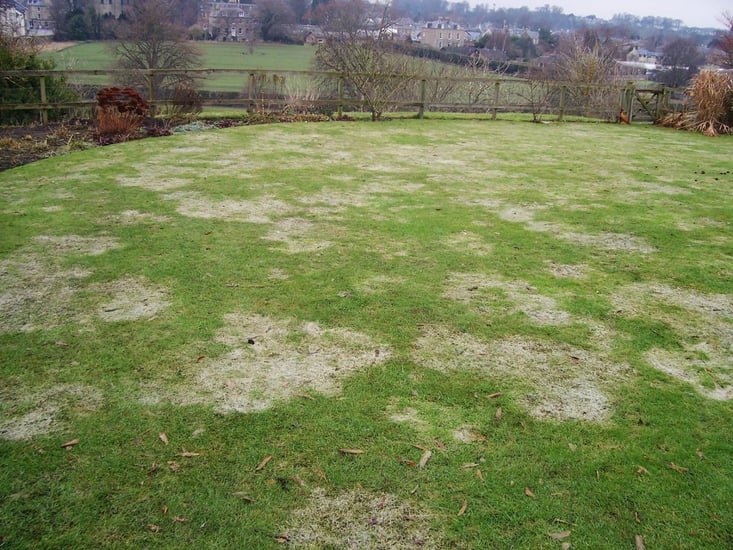
Common lawn diseases are difficult to diagnose. In most cases, the only sign of distress is when the grass is already dead. If your lawn is already exhibiting patches of dead or yellowing grass, don't despair. The expert lawn care and inground sprinkler system installers at Nutri-Lawn Ottawa can help you tackle these problematic patches and prevent the spread of disease. The following diseases are the ones most commonly found on local lawns:
1) Snow Moulds
Snow moulds are caused by several species of fungi, most of which grow at temperatures near freezing. Symptoms of this common lawn disease are most prevalent in the spring, or whenever the first major snow melt occurs. Signs of snow mould include circular or irregular straw-coloured patches that are topped by fluffy grey or pink mould spores. The residential sprinkler installers at Nutri-Lawn Ottawa usually notice damage in areas where snow persists longer in the spring (the areas next to driveways are often the first to show signs of distress).
Treatment Methods
The residential sprinkler system installers at Nutri-Lawn recommend tackling this common lawn disease immediately in order to prevent it from spreading. Start by raking the affected turf area as soon as the snow has melted. This will encourage the area to dry faster and will help protect against moulding. Apply a fertilizer to the area in order to encourage growth. When it comes time to prepare your lawn for winter, make sure you cut your grass on a slightly lower setting. This will make it more difficult for the mould spores to form beneath snow. The residential sprinkler system installers at Nutri-Lawn also recommend removing any excessive thatch at this time.
2) Necrotic Ring Spots
If you've started to notice wilted, bluish areas on your lawn, chances are you're dealing with a necrotic fungus infestation. This fungus affects the roots of plants in the spring, with the damage becoming more pronounced during the hot summer months.
Treatment Methods
Problematic necrotic ring spots can be managed in three simple steps:
- Water the infected area lightly and frequently with a residential sprinkler system in order to encourage root growth.
- Aerate and overseed the affected area in the late summer or early fall in order to strengthen your lawn's resistance.
- Remove excessive thatch in the fall.
3) Fairy Rings
Fairy rings are easy to recognize because they usually feature a ring of white mushroom growth. This type of lawn disease is most noticeable in areas where soil has low fertility and inadequate moisture. You'll also notice a mouldy or musty smell in the affected area.
Treatment Methods
The best way to manage fairy rings is with water. Cultivate the affected area deeply, and then drench it with your residential sprinkler system. This will help stimulate the micro organisms living in the soil. Ottawa residents should also remove any visible mushrooms in order to prevent the fungus from spreading.
Don't let disease devastate your lawn this summer. Contact the lawn care experts at Nutri-Lawn Ottawa at the first signs of dead or discoloured grass.






